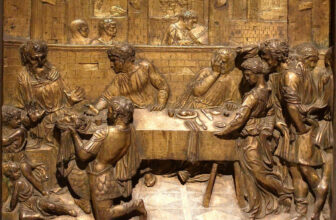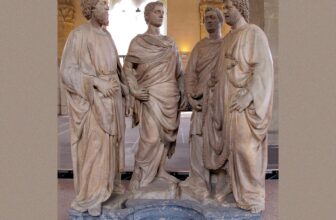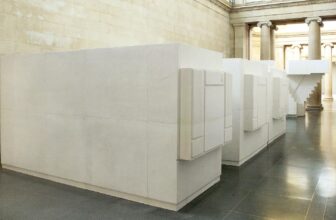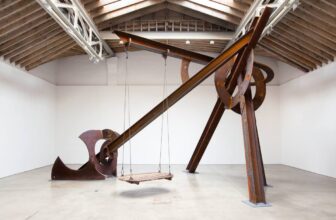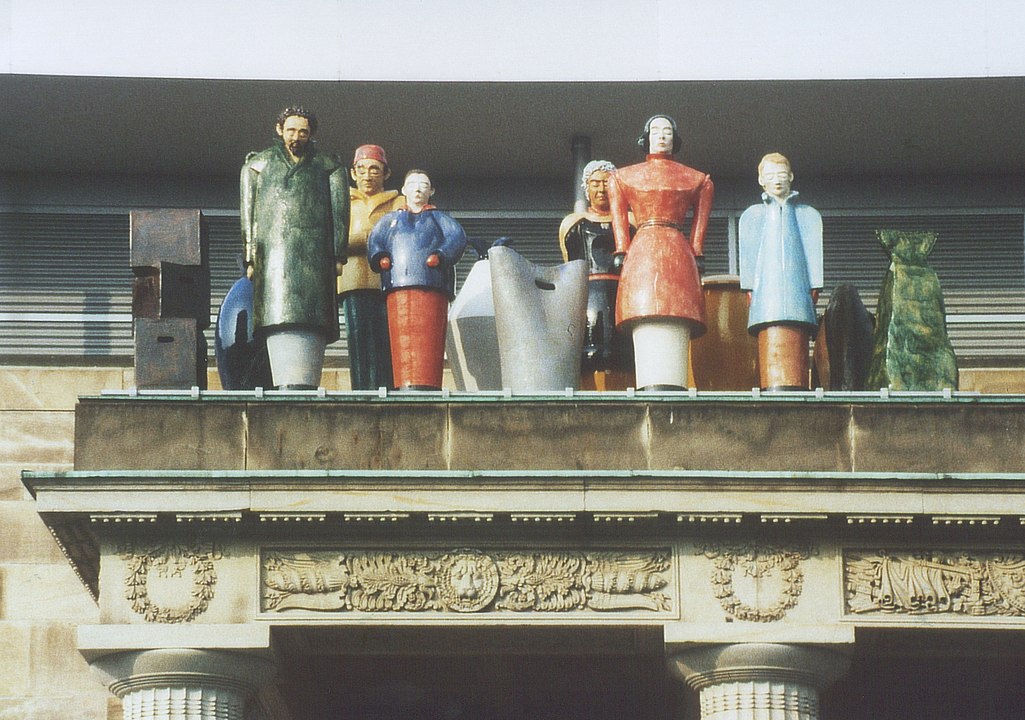
What are Thomas Schutte’s Most Famous Sculptures
In the modern art world, where shock value often takes precedence over substance, Thomas Schutte remains a rare force—a sculptor whose work consistently balances complexity, craftsmanship, and deep emotional resonance. Born in 1954 in Oldenburg, Germany, Schutte is one of the most influential artists of his generation, known for his hauntingly human sculptures, politically loaded installations, and architectural experiments.
Over the past four decades, his artistic journey has been marked by an unwavering commitment to exploring what it means to be human—particularly in times of political turmoil, social change, and existential reflection. His sculptures are monumental in form but often deeply personal in message, inviting viewers to confront vulnerability, authority, identity, and even mortality.
Let’s explore what makes Thomas Schutte’s sculptures so unforgettable, dive into his most famous works, understand how he crafts them, find out where they are located, and discuss how much they’re worth in the contemporary art market.
What Is Thomas Schutte Known For?
Thomas Schutte is known for blurring the boundaries between sculpture, architecture, and installation. He emerged in the late 1970s and early 1980s during the postmodernist upheaval in European art, and his work has constantly defied categorization ever since. Unlike many conceptual artists of his era who turned away from traditional mediums, Schutte embraced figurative sculpture—but gave it a dark, contemporary twist.
He is celebrated for his ability to reinvigorate figurative sculpture, particularly male busts and monumental figures, with emotional depth and political critique. While many of his contemporaries in Germany and beyond were embracing abstraction, minimalism, or digital formats, Schutte stayed loyal to clay, bronze, and steel. Yet he used these “classical” materials to challenge conventions, often making unsettling or grotesque sculptures that force the viewer to look beyond beauty and into the soul of a figure.
His sculptures explore themes such as:
Power and authority
Human vulnerability
War, death, and loss
Architecture and public space
The failures of modernism
In short, Schutte is known for being a chronicler of human struggle and memory, using materials and figures to voice what words cannot.
Thomas Schutte’s Most Famous Sculptures
Over the years, Schutte has produced an array of iconic works, but some stand out due to their scale, placement, emotional gravity, and critical reception. Here are some of his most celebrated sculptures:
1. “Mann im Matsch” (Man in Mud), 1982
One of his earliest breakthrough sculptures, “Mann im Matsch” depicts a man knee-deep in clay—literally. It’s a powerful metaphor for being stuck, overwhelmed, and caught in existential or societal quicksand. This early work already shows Schutte’s ability to merge the abstract with the deeply personal.
2. “Große Geister” (Big Spirits), 1996–2004
These large, shiny aluminum figures are among Schutte’s most widely recognized pieces. Standing up to 8 feet tall, they are humanoid in shape but grotesquely distorted, faceless, and almost alien. Are they robots? Ghosts? Politicians? The interpretation is open, but the feeling is clear: these are figures of power stripped of humanity.
“Große Geister” became internationally famous when exhibited outdoors and in public plazas, appearing as monolithic sentinels watching over us or haunting our collective memory. Their ghostly forms echo themes of post-war trauma, corporate dehumanization, and the hollowing out of public figures.
3. “United Enemies” (1993–2011)
Initially created in the early 1990s but expanded upon years later, “United Enemies” presents two grotesquely deformed political figures tied together—often literally, with rope or twine. The figures are locked in conflict but unable to escape each other.
The message is as relevant today as it was in post-Cold War Europe: power structures are interdependent, corrupt, and ultimately deformed by their own internal contradictions. A large-scale bronze version of “United Enemies” was installed in London’s Trafalgar Square’s Fourth Plinth in 2012, further catapulting Schutte into international stardom.
4. “Krieger” (Warriors), 2018
In this powerful bronze series, Schutte created standing male figures—nude, muscular, and somewhat classical in form—but they are warped and wounded, evoking the scars of battle and the psychological aftermath of war. Rather than glorifying strength, “Krieger” confronts us with the cost of violence, the physical and emotional toll war takes on the human body.
5. “Die Fremden” (The Strangers), 1992
This installation appeared on the roof of the Kunsthalle Dusseldorf, featuring brightly colored ceramic figures gazing over the edge of the building. They look both whimsical and sorrowful, confronting themes of migration, alienation, and displacement—fitting subjects in a Germany still reconciling with its past and redefining its national identity.
How Did Thomas Schutte Make His Sculptures?
Schutte’s work combines classical techniques with contemporary experimentation. He often starts with small clay models—raw, emotional, almost sketch-like. These maquettes are sometimes used directly, cast in bronze or ceramic, or scaled up into massive public sculptures.
His techniques involve:
● Clay and Wax Modeling
Schutte begins many of his figures in clay or wax, which allows for spontaneity and expression. The softness of the medium captures gesture and emotion—traits often lost in traditional bronze work. He intentionally leaves fingerprints, cracks, and imperfections visible.
● Bronze Casting
For larger works, Schutte employs bronze casting—an ancient technique made modern by his grotesque, hyper-expressive figures. Unlike classical bronzes, Schutte’s are often uneven, distorted, or fragmentary.
● Steel and Aluminum Fabrication
For more abstract forms like “Große Geister,” Schutte turns to industrial materials like aluminum and stainless steel, working with foundries and fabricators to bring his large-scale visions to life.
● Ceramics and Glazes
He also frequently uses ceramics, especially for smaller busts and portrait-style pieces. These are often colorfully glazed, with deliberate irregularities that highlight vulnerability and emotion.
● Architecture-Inspired Sculptures
Schutte sometimes creates architectural models or pavilions, such as his “Holiday Homes for Artists” series—miniature buildings that explore the concept of refuge, isolation, and utopia. These are made with wood, glass, and concrete, serving as both sculpture and livable space.
Where Are Thomas Schutte’s Sculptures Located?
Schutte’s works are scattered across the globe in museums, private collections, and public spaces. Here are some notable locations where you can encounter his work:
Germany
Kunstsammlung Nordrhein-Westfalen (K21), Dusseldorf – A major permanent collection includes Schutte’s works, especially his early ceramic heads.
Skulpturenpark Waldfrieden, Wuppertal – This sculpture park, founded by Tony Cragg, has hosted several Schutte works in a forested environment.
Documenta Kassel – Schutte has participated in multiple Documenta exhibitions, showcasing both architectural models and monumental sculptures.
United Kingdom
Trafalgar Square, London – “United Enemies” was displayed on the Fourth Plinth in 2012.
Frieze Sculpture Park, Regent’s Park, London – Schutte’s works have appeared multiple times during Frieze Art Fair.
United States
Museum of Modern Art (MoMA), New York – Holds several works by Schutte, especially smaller-scale pieces and architectural models.
Dia Art Foundation, Beacon, New York – Showcases large installations and experimental works.
Art Institute of Chicago – Known to display Schutte’s busts and ceramics.
France and Other Countries
Centre Pompidou, Paris – Holds various pieces including drawings and architectural maquettes.
Fondation Beyeler, Switzerland – Exhibited a major retrospective of Schutte’s work in 2019.
Venice Biennale – He represented Germany in 2005 and won the Golden Lion for Best Individual Artist.
How Much Are Thomas Schutte’s Sculptures Worth?
Thomas Schutte’s sculptures are highly valued in the art market, with prices ranging from tens of thousands to millions of dollars, depending on the work’s size, material, edition, and provenance.
Here’s a rough breakdown:
● Small Ceramics & Busts
Starting around $50,000 to $200,000
Highly collectible due to their uniqueness and emotional immediacy
● Bronze and Steel Sculptures
Mid-size pieces: $500,000 to $1.5 million
Monumental works (like “Große Geister” or “United Enemies”): $2 million to $6 million or more
● Public Commissions and Architectural Projects
These are typically not sold but commissioned for six- to seven-figure budgets depending on the scale.
Auction houses like Christie’s, Sotheby’s, and Phillips frequently feature Schutte’s work, and his auction records reflect a robust demand among both institutional and private collectors.
Why Does Thomas Schutte Matter?
In an age of digital art and fleeting social media-driven creativity, Thomas Schutte remains deeply committed to the physicality of sculpture and the emotional truth of the human form. His work doesn’t shout for attention—it lingers, provoking thought, discomfort, empathy, and awe.
Where others see form, Schutte sees metaphor. His sculptures are never just bodies or shapes—they’re vessels of memory, mirrors to power, and monuments to the fragile self.
As society grapples with questions of leadership, identity, and vulnerability, Schutte’s work continues to resonate. He reminds us that art doesn’t need to be trendy to be transformative. Sometimes, the most powerful expression is a twisted figure, gazing silently at the chaos around it.
In the words of Thomas Schutte himself:
“I don’t make art to please. I make art to survive.”
And in doing so, he gives the rest of us something lasting to hold onto.
